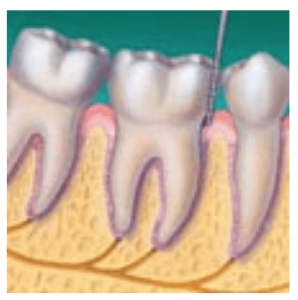Dental Clinic | Ang Mo Kio, Bedok, Jurong East, Tampines – Dental Implants & Oral Care Singapore
No Pain, No need for dentist
No Pain, No need for dentist

Sounds familiar? Well, you are not alone. “No pain” is the top reason many patients cited in surveys for not visiting the dentist. A 2012 study reported by Singapore Health found that six in 10 Singaporeans did not have dental check-ups every six months, and 43 percent visited a dentist only when they had problems like a toothache. Also, 56 percent of them spent less than two minutes a day brushing their teeth and 18 percent did not brush their teeth twice a day!
So if you have yet to schedule for your annual dental check, Call Ang Mo Kio: 9631 1728, Tampines: 9725 1728 or Jurong East: 9770 1728 to schedule your first appointment of the year now.
With clinics strategically located in Ang Mo Kio, Tampines and Jurong East, 1728 Dental Practice is conveniently located near bus interchanges, MRT stations and residential estates. We have a dedicated pool of experienced dentists and hygienists, supported by more than 15 dental surgery assistants, competent in delivering quality care. All our clinics are fully equipped with technologies that provide timely and accurate diagnosis for the delivery of quality and affordable dental care.
General Oral Hygiene
Gum Health is the foundation of dental health.
A tooth can be likened to a tree.
A Tree is planted in soil and if the soil is diseased, it “weakens” and kind of gets “pushed away”, resulting in a tree that is prone to tipping and collapsing.
A tooth is no different.
A tooth is “planted” in bone, and if the bone is diseased ( known as Gum Disease) , it “weakens” and gets “pushed away” , resulting in a tooth that is prone to tipping and collapsin
What is Gum Disease?
Gum disease is an inflammation of the gums that can progress to affect the bone that surrounds and supports your teeth.
It is caused by the bacteria in plaque, a sticky, colorless film that constantly forms on your teeth.
If not removed through daily brushing and flossing, plaque can build up and the bacteria infect not only your gums and teeth, but eventually the gum tissue and bone that support the teeth.
This can cause them to become loose, fall out or have to be removed by a dentist.
There are three stages of gum disease:
Gingivitis: this is the earliest stage of gum disease, an inflammation of the gums caused by plaque buildup at the gumline.
If daily brushing and flossing do not remove the plaque, it produces toxins (poisons) that can irritate the gum tissue, causing gingivitis.
You may notice some bleeding during brushing and flossing.
At this early stage in gum disease, damage can be reversed, since the bone and connective tissue that hold the teeth in place are not yet affected.
Periodontitis: at this stage, the supporting bone and fibers that hold your teeth in place are irreversibly damaged.
Your gums may begin to form a pocket below the gumline, which traps food and plaque.
Proper dental treatment and improved home care can usually help prevent further damage.
Advanced Periodontitis: in this final stage of gum disease, the fibers and bone supporting your teeth are destroyed, which can cause your teeth to shift or loosen.
This can affect your bite and, if aggressive treatment can’t save them, teeth may need to be removed.
How do I Know if I Have Gum Disease?
Gum disease can occur at any age, but it is most common among adults.
If detected in its early stages, gum disease can be reversed so see your dentist if you notice any of the following symptoms:
Gums that are red, puffy or swollen, or tender
Gums that bleed during brushing or flossing
Teeth that look longer because your gums have receded
Gums that have separated, or pulled away, from your teeth, creating a pocket
Changes in the way your teeth fit together when you bite
Pus coming from between your teeth and gums
Constant bad breath or a bad taste in your mouth
How is Gum Disease Treated?
The early stages of gum disease can often be reversed with proper brushing and flossing.
Good oral health will help keep plaque from building up.
A professional cleaning by your dentist or hygienist is the only way to remove plaque that has built up and hardened into tartar.
Your dentist or hygienist will clean or “scale” your teeth to remove the tartar above and below the gumline.
If your condition is more severe, a root planing procedure may be performed.
Root planing helps to smooth irregularities on the roots of the teeth making it more difficult for plaque to deposit there.
By scheduling regular checkups, early stage gum disease can be treated before it leads to a much more serious condition.
If your condition is more advanced, treatment in the dental office will be required.
 Healthy Gums – healthy gums are firm and don’t bleed. They fit snugly
Healthy Gums – healthy gums are firm and don’t bleed. They fit snuglyaround the teeth.
 Gingivitis – gums are mildly inflamed, may appear red or swollen and
Gingivitis – gums are mildly inflamed, may appear red or swollen andmay bleed during brushing.
 Periodontitis – gums begin to separate and recede from the teeth. This
Periodontitis – gums begin to separate and recede from the teeth. Thisallows plaque to move toward the roots, supporting fibers and bone.
 Advanced Periodontitis – supporting fibers and bone are destroyed.
Advanced Periodontitis – supporting fibers and bone are destroyed.Teeth become loose and may need to be removed.
Credit : http://www.colgate.com/en/us/oc/oral-health/conditions/gum-disease/article/what-are-the-stages-of-gum-disease
https://www.ndcs.com.sg/Newsroom/MediaCoverage/Pages/BrushUpOnDentalHealth.aspx
















